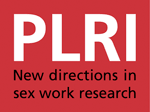Measuring perceived stigma in female sex workers in Chennai, India
Although sex work is highly stigmatized throughout the world, a limited body of research has examined stigma among female sex workers (FSWs). We developed a Sex Worker Stigma (SWS) Index to measure perceived stigma among 150 FSWs in Chennai, India. These women were at a median age of 35 years and reported, on average, having engaged in sex work for nine out of the previous 12 months. The two-factor structure of the index was verified in both exploratory and confirmatory factor analyses with acceptable goodness of fit. The final 10-item index comprises of two domains of perceived stigma from the

